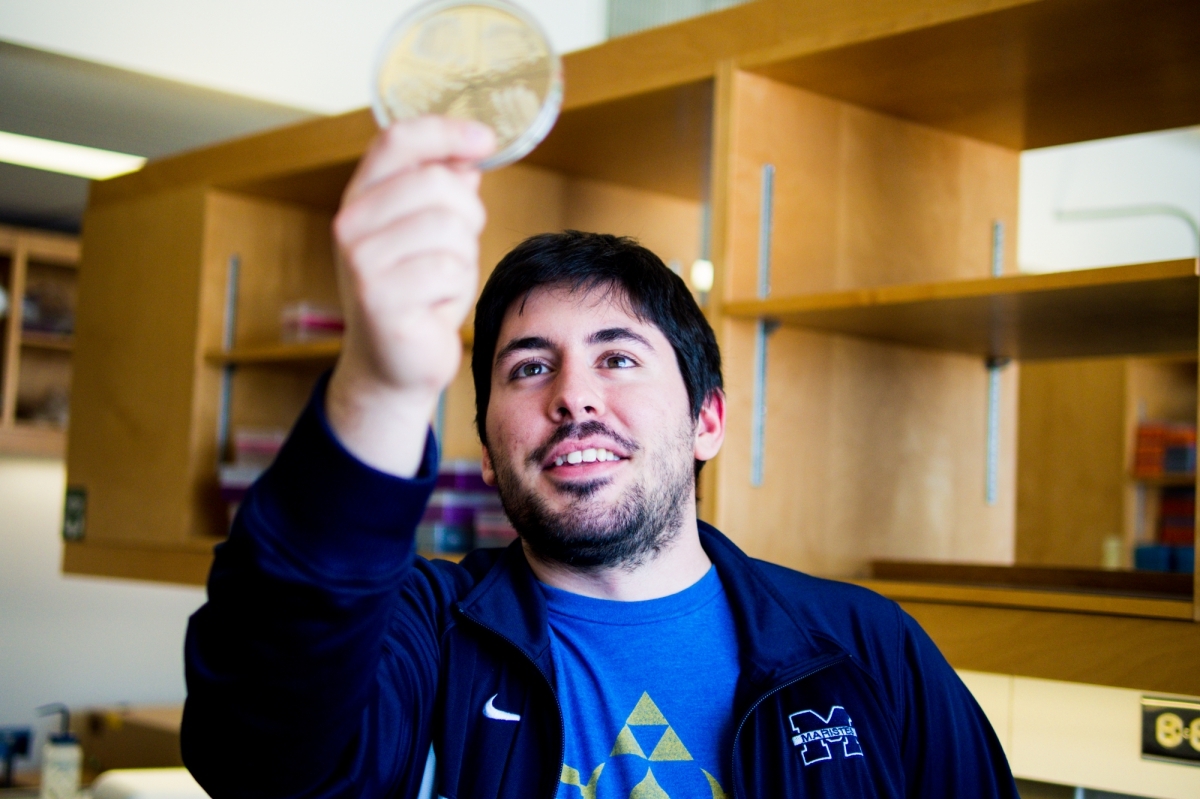Philippe Després
PhD Student / Yeast genome editing
e-mail: philippe.despres.3 [at] ulaval.ca
Biography
Born in Maria, a small village in Gaspésie, I have spent the better part of my life in Québec city. There are many scientists in my family, and so I was exposed to the good (and stressful) aspects of research from a young age. Nevertheless, I knew from a young age that I wanted to work in science. After obtaining my college degree, I started an undergraduate degree in Biochemistry at Laval University. I was very active in my student association, and served a term as president of the AEBBMUL. During my first summer, I started an internship in the Landry lab, and I have been there ever since. I am one of the Landry Lab Systems Biology Hybrid© as I spend half my time in the wet lab and half in front of my computer. In the lab, I am known as the CRISPR guy, and I’ve contributed to the development of yeast genome editing protocols for multiple applications. At my computer, I specialize in protein-protein interaction (PPI) network annotation and analysis, whether it be for new biological insights or to assist in experimental design.
Research interests
I am interested in understanding the molecular bases of cellular robustness. Whether at the genomic level or in PPI networks, I believe understanding this phenomenon and its relationship with genetic variation will be key to next generation precision medicine. Man’s true best friend, the yeast Saccharomyces cerevisiae, is the perfect tool to answer these questions at high throughput ! #APOYG
Publications


Després PC, Cisneros AF, Alexander EMM, Sonigara R, Gagné-Thivierge C, Dubé AK, and Landry CR. Asymmetrical dose responses shape the evolutionary trade-off between antifungal resistance and nutrient use. Nature Ecol Evol (2022)


Dubé AK, Dandage R, Dibyachintan S, Dionne U, Després PC, and Landry CR. Deep mutational scanning of PPIs between partners expressed from their endogenous loci. Yeast Functional Genomics pp 237-259 (2022)

Evans-Yamamoto D, Rouleau FD, Nanda P, Makanae K, Liu Y, Després PC, Matsuo H, Seki M, Dubé AK, Ascencio D, Yachie N, and Landry CR. Barcode fusion genetics-protein-fragment complementation assay (BFG-PCA): tools and resources that expand the potential for binary protein interaction discovery. Nucleic Acids Research, gkac045 (2022)


Després PC, Dubé AK, Seki M, Yachie N, Landry CR. Perturbing proteomes at single residue resolution using base editing. Nature Communications 11 (1), 1-13 (2020)

Bleuven C, Nguyen GQ, Després PC, Filteau M, Landry CR. Competition experiments in a soil microcosm reveal the impact of genetic and biotic factors on yeast natural populations. The ISME Journal 14 (6), 1410-1421 (2020)

Dandage R, Després PC, Yachie N & CR Landry, beditor: A computational workflow for designing libraries of guide RNAs for CRISPR base editing. Genetics 212 (2), 377-385 (2019)

Després PC, Dubé AK, Nielly-Thibault L, Yachie N, Landry CR. Double selection enhances the efficiency of target-AID and Cas9-based genome editing in yeast. G3: Genes, Genomes, Genetics 8 (10), 3163-3171 (2018)

Chrétien AE, Gagnon-Arsenault I, Dubé AK, Barbeau X, Després PC, Lamothe C, Dion-Côté AM, Lagüe P & Landry CR, Extended linkers improve the detection of protein-protein interactions (PPIs) by dihydrofolate reductase protein-fragment complementation assay (DHFR PCA) in Living Cells. Molecular & Cellular Proteomics 17:373-383 (2018)
